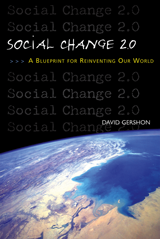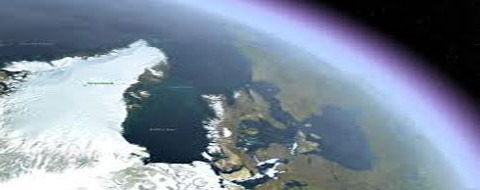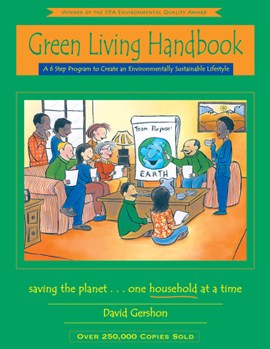ASSESSING THE SUSTAINABILITY OF YOUR COMMUNITY’S RESIDENTIAL ENERGY WASTE MANAGEMENT
The agencies likely to be involved in energy conservation will generally fall under the following categories: municipal energy office, state energy office, electric utility, gas utility.
- Does the municipality have a sustainable energy policy that includes residential use? If no policy exists, how could one be established?
- If yes, how is residential energy conservation encouraged? How is using renewable energy encouraged? Please describe the policy and programs.
- List the programs your utility(s) and municipality have in place to help citizens develop more sustainable energy households. e.g., home energy audits, appliance rebates, free energy saving fixtures, building codes promoting energy insulation, green energy products enabling easy use of renewable energy, etc.
- Describe why each program came into existence and its current goals.
- What have been the principal strategies used to achieve citizen participation? Which have been successful and why? Which have been unsuccessful and why?
- How is success measured? Include the numerical targets of the program. If there are no targets, how might targets be established?
- What percentage of citizens participate in each program?
- What percentage of energy is conserved and is of a renewable source?
- What has been the participation in each program over the last three years? Have participation, conservation and renewable energy use increased, leveled off or decreased? Please explain what is causing this trend.
- Do certain neighborhoods have successful participation in energy conservation and renewable energy use? Why is this? Please describe what has been learned.
- What incentives are there in the municipality/state/utility, if any, for providing energy conservation and renewal energy products, e.g., utility compliance with state public service commission to provide energy conservation programs, avoided costs of expanding infrastructure, financial incentives provided by the municipality for selling green power, city ordinance providing incentives for utilities to participate in natural resource conservation as a principal of community sustainability, etc.?
- Which energy utilities benefit from energy conservation or sale of renewable energy, e.g., utilities supplying their own energy that can avoid infrastructure expansion for peak demand, utilities that promote conservation to create financial capability for households to purchase green power at a premium, utilities that wish to maintain customer loyalty or develop a competitive advantage by providing conservation services, etc.?
- If fiscal benefits are derived from energy conservation or sale of green power, how could these be calculated and projected over time, e.g., energy needed to be saved to extend the life of the current facilities by a certain number of years, operational efficiencies of energy generating plant, cost efficiencies from reaching a certain volume of green power sales, etc.?
- Are there any policies that the utility has to reinvest these financial savings into creating greater energy conservation or reducing rates for green power? Please describe. If not, how might the municipality, perhaps in cooperation with the public service commission, encourage the establishment of such a policy?
- What disincentives are there in the utility, if any, for residential energy conservation, e.g., loss of revenues from less energy being used, etc.?
- Are there any municipal policies for assuring that incentives to energy conservation and sale of green power are enhanced, and disincentives eliminated? If not, how might these be pursued?
BECOME CERTIFIED AS A SUSTAINABLE LIFESTYLE CAMPAIGN LEADER

A Sustainable Lifestyle Campaign leader certification is based on Empowerement Institute’s Social Change 2.0 community organizing framework. As part of the certification, you will learn how to facilitate an empowerment training, provide empowerment coaching, and use the Social Change 2.0 framework, strategies and skills to architect a transformational community intervention. You will also receive the Sustainable Lifestyle Campaign training scripts, organizing templates and guidance on how to customize the campaign to the unique needs of your community and project.
IMPLEMENT THE GREEN LIVING PROGRAM IN YOUR COMMUNITY
 The Sustainable Lifestyle Campaign is an education and outreach program to assist local governments, utilities and community-based organizations in implementing the Green Living Program. Empowerment Institute offers Social Change 2.0 community organizing leadership certification focused on implementation of the Sustainable Lifestyle Campaign and a customized community training.
The Sustainable Lifestyle Campaign is an education and outreach program to assist local governments, utilities and community-based organizations in implementing the Green Living Program. Empowerment Institute offers Social Change 2.0 community organizing leadership certification focused on implementation of the Sustainable Lifestyle Campaign and a customized community training.
IMPLEMENT THE CHILDREN'S VERSION OF THE GREEN LIVING PROGRAM
 Journey for the Planet
Journey for the Planet
A Kid’s Five Week Adventure to Create an Earth-friendly Life
Journey for the Planet is a children’s version of Green Living Program for kids 8 to 12 years old. This program can be delivered in a classroom, after-school club, youth organization or for children of adults taking part in an EcoTeam. It is complemented by a twenty-six-lesson plan educator’s curriculum called the “Coach’s Guide.” Empowerment Institute offers a Journey for the Planet teacher certification.
LEARN ABOUT SOCIAL CHANGE 2.0
 To learn more about the Social Change 2.0 framework and research underpinning the Green Living Program see Social Change 2.0
To learn more about the Social Change 2.0 framework and research underpinning the Green Living Program see Social Change 2.0
SUSTAINABLE LIFESTYLE CAMPAIGN TESTIMONIALS

“The program offers a common sense approach to environmentalism. [One participant says] ‘I love our neighborhood and this is an opportunity for us to make it an even nicer place to live together.’”
– The Boston Globe
